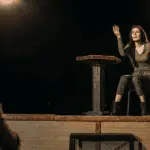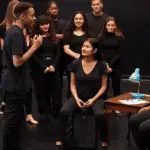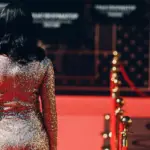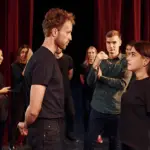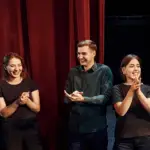Acting is a time-honored craft that has spawned various acting techniques and styles. Each approach to performing arts brings unique skills and insights that actors can use to create compelling performances. Familiarizing oneself with the different approaches to acting is essential for aspiring actors to improve their craft and become versatile performers.
Mastering various types of acting techniques equips actors with the skills to handle multiple roles and performance styles. Improvisational actors may excel in live theater, while voice actors may be better suited for animated films or commercials. This article aims to define and explore some of the most famous acting techniques, their history, and philosophy and provide examples of famous actors who have utilized them in their performances.
Aspiring actors who read this article will better understand the different approaches to different types of acting techniques and how to apply them in actual performance.
Method Acting
Method acting prioritizes the emotional and psychological components of a character’s encounter, enabling actors to deliver genuine and credible performances. It originated in the early 20th century with the teachings of Konstantin Stanislavski and later evolved with the work of Lee Strasberg and others in the United States.
Method acting is applied in practice by encouraging actors to draw from their personal memories of, experiences, and emotions to fully embody the character they are portraying. This can involve extensive research into the character’s backstory and motivations, as well as the physical and vocal characteristics of the surface.
Famous actors who have used the method acting technique in their performances include Marlon Brando, Al Pacino, and Robert De Niro, all known for their profoundly immersive and transformative performances on screen and stage. The Method acting technique has been praised and criticized for its intensity and potential for emotional exhaustion. Still, it remains a popular approach for many actors today.
Classical Acting
Classical acting is based on the various acting styles and methods used by the actors who performed in plays during the classical era of theater. It is a style that focuses on naturalism and realism in performance, using physicality and vocal technique to convey emotions and character traits. The history of classical acting dates back to ancient Greek and Roman theater, where actors were required to undergo rigorous training to achieve the desired level of performance.
In modern times, classical acting is typically associated with the works of William Shakespeare and other playwrights of his era, such as Christopher Marlowe and Ben Jonson. Classical acting class techniques include vocal projection, breath control, and precise physical movement. Actors also use heightened language and poetry to convey complex emotions and ideas.
One key aspect of the classical acting method is the importance of text analysis, where actors carefully examine the language and meaning of the script to inform their performance. Famous classical actors include Laurence Olivier, John Gielgud, and Judi Dench, who delivered memorable performances in Shakespearean plays such as “Hamlet” and “Macbeth.” Their ability to convey the subtleties of classical language and their physical embodiment of characters have set a high standard for classical acting.
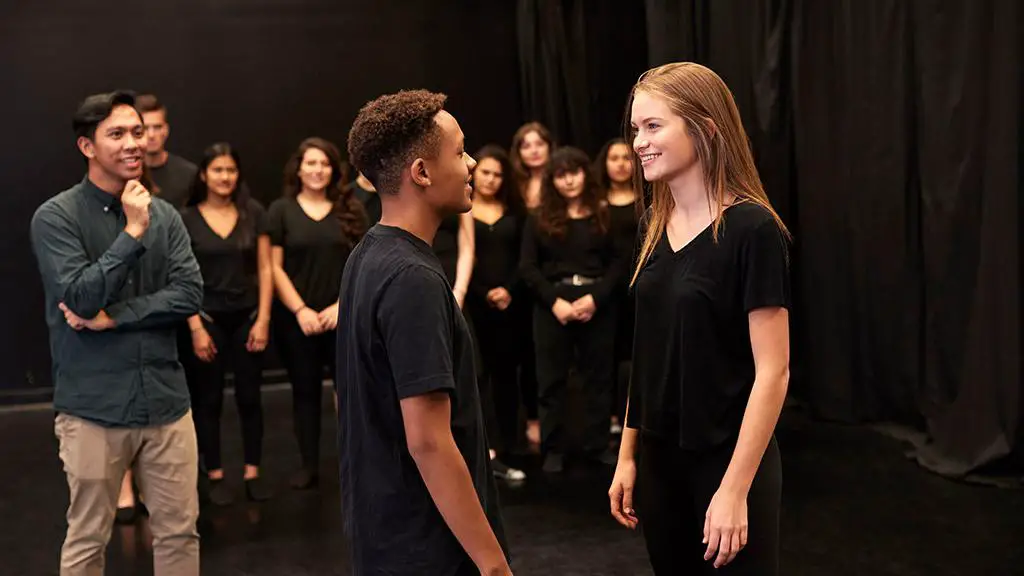 Improvisational Acting
Improvisational Acting
Improvisational acting is a form of acting that involves creating spontaneous dialogue and actions in a scene without a script or pre-planning. It originated in the 20th century as a form of experimental theatre, and it has since become a popular technique used for screen acting in film and television. The improvisational acting process is applied by creating a safe and supportive environment for actors to explore their creativity and spontaneity.
Actors in improv classes are encouraged to listen carefully to their scene partners and respond honestly at the moment, using their imagination and intuition to create exciting and engaging scenes. Some famous improvisational actors include Robin Williams, Tina Fey, and Will Ferrell, known for their quick wit and ability to improvise in high-pressure situations. Improvisational acting is often used in comedy and can create unexpected and hilarious moments unique to new actors with each performance.
Improvisational acting classes can help individuals improve their ability to respond creatively and confidently to unexpected situations, both personally and professionally. These benefits extend beyond the scope of acting.
Physical Acting
Physical acting means using the body and physicality to convey emotions and tell a story, and it is a fundamental approach to acting that has been used for centuries. Physical acting involves using body language, gestures, facial expressions, and movement to create a character and emotional memory and bring a story to life. Physical acting is an essential aspect of theatre and film, allowing actors to communicate nonverbally with their audience.
Some techniques used in physical acting include mime, acrobatics, dance, and combat choreography. Many famous actors have mastered physical acting and incorporated it into their performances. Charlie Chaplin is a prime example of an actor who used physical acting in school theater to create iconic characters such as the Tramp.
Jackie Chan is another example of an actor who has mastered physical acting, often performing his stunts in his films. Physical acting is essential for actors to convey emotions and bring a character to life on stage or screen. It allows actors to communicate powerfully and viscerally with their audiences, which can be felt beyond words.
Meisner Technique
The Meisner Technique is a popular approach in acting that emphasizes truthful emotional responses in performance. The technique method acting was developed by American actor and acting coach Sanford Meisner who was one of the first teachers in The Actors Studio in the 1930s and has since been used by many actors in their performances. At its core, the Meisner Technique encourages actors to focus on their emotional reactions to their character’s internal state and the stimuli around them rather than trying to “act” in a prescribed way.
This allows actors to fully immerse themselves in their characters and respond to their environment naturally and organically. In practice, the Meisner Technique involves a series of exercises designed to help actors develop their sense memory and observation skills, and ability to respond truthfully. These exercises include repetition, emotional preparation, script analysis, and improvisation.
Many famous actors have credited the Meisner Technique with helping them to develop their craft. Notable practitioners of the technique include Robert Duvall, Grace Kelly, and Jeff Goldblum, among others. The method is particularly well-suited to actors interested in naturalistic, character-driven performances.
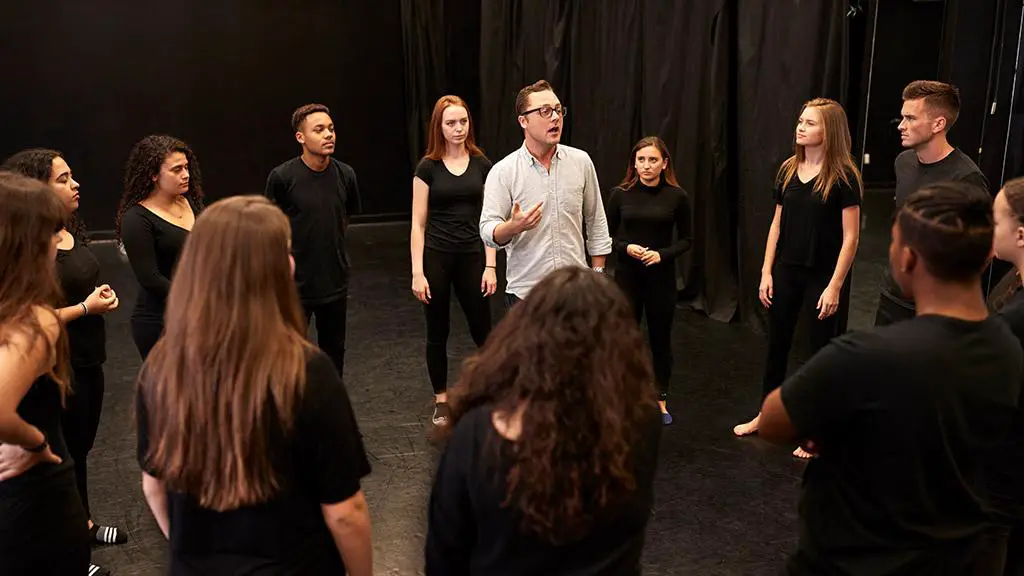 Viewpoints
Viewpoints
Viewpoints is a technique developed in the 1970s by master theater artist and educator Mary Overlie. This is a technique of dance composition where the performer acts upon movement, gesture and creative space. The technique, which has been studied and practiced for decades in theater and dance involves six viewpoints: space, story, time, emotion, movement, and shape, has been adapted by directors Anne Bogart and Tina Landau.
Viewpoints are a collaborative technique used to create an ensemble performance, and it is often used in developing new works and is particularly popular among experimental theater companies. The method uses nine viewpoints: space, shape, time, emotion, story, movement, rhythm, gesture, and sound. These viewpoints explore the actor’s relationship to the performance space and their connection to their fellow actors.
Viewpoints are applied through exercises and improvisations that help actors develop their physical awareness and sensitivity. This technique benefits actors interested in physical theater but can also be used in more traditional forms of theater. Many famous theater and stage actors have used Viewpoints in their performances, notably the members of New York’s SITI Company, who are known for their innovative use of the technique.
Clowning
Clowning, also known as physical comedy, is a form of acting centered around humor, exaggerated movements, and facial expressions to entertain audiences. The roots of Clowning can be traced back to ancient Greece and Rome, where it was used as a form of satire to comment on political and social issues. Clowning involves using physical humor and exaggerated movements to convey emotions and tell stories.
Actors specializing in Clowning must possess a keen sense of timing, coordination, and physical agility. They must also be able to connect with their audience and create a sense of rapport through their performances. Many famous actors, including Charlie Chaplin, Buster Keaton, and Lucille Ball, have used Clowning in their performances.
These actors were known for their ability to create memorable and entertaining characters through their physical comedy and comedic timing. Today, Clowning is still used by actors in theater, film, and television to develop comedic and entertaining performances that resonate with audiences of all ages.
Puppetry
Puppetry is an ancient theatrical art form that manipulates and animates puppets to convey stories and emotions. The history of puppetry dates back to ancient civilizations, with evidence of puppetry found in Egypt, Greece, and China. In puppetry, a puppeteer uses various techniques to bring the puppet to life, such as hand manipulation, string manipulation, rod manipulation, and shadow puppetry.
The puppeteer must possess excellent coordination and dexterity to operate the puppet while bringing it to life with subtle movements and expressions. Many actors have used puppetry in their performances, often in films or television shows with special effects. For example, Andy Serkis used motion capture technology to bring the character of Gollum to life in the Lord of the Rings films.
Frank Oz has been a prominent puppeteer for decades, working on iconic projects such as The Muppets, Sesame Street, and Star Wars. Puppetry is a unique form of entertainment and a valuable tool for actors to develop their physical and emotional range. It challenges actors to think beyond their bodies and voices and embody a different character, bringing a new level of authenticity to their performances.
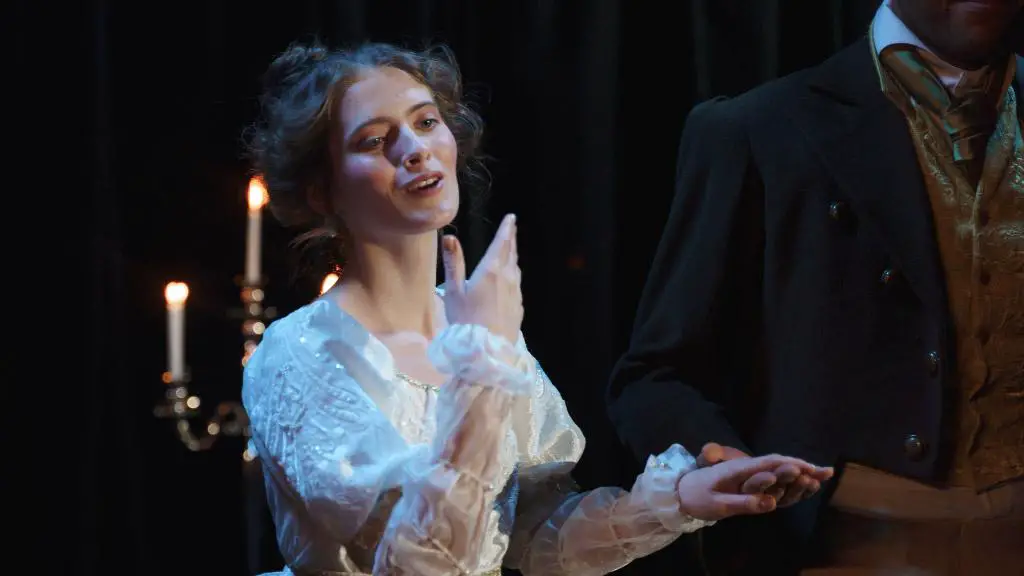 Shakespearean Acting
Shakespearean Acting
Shakespearean acting is the performance of William Shakespeare’s plays written during the late 16th and early 17th centuries. The spaces are characterized by their poetic language and complex characters, which require a unique approach to acting.
One of the primary techniques used in Shakespearean Acting is verse speaking, which involves the rhythmic delivery of lines in iambic pentameter. This technique is used to emphasize the language’s musicality and create a sense of heightened drama. Another important technique used in Shakespearean and Acting classes is rhetoric, which involves using persuasive language to influence the audience.
Actors must be skilled in using rhetorical devices such as repetition, antithesis, and metaphor to communicate the text’s meaning effectively. Famous Shakespearean actors include Laurence Olivier, Ian McKellen, Kenneth Branagh, and Judi Dench, among many others. Their performances in Shakespeare’s plays have been praised for their depth, nuance, and emotional intensity.
Overall, Shakespearean acting is a unique approach that requires mastering language, rhythm necessary, action, and rhetoric. Its importance lies in its actor’s ability to convey complex themes and characters through the power of speech, making it an essential part of any actor’s toolkit.
Voice Acting
Voice acting is a form that involves using only one’s voice to portray a character. It is a unique and essential branch of acting as it plays a significant role in various forms of media, such as animation, video games, radio dramas, audiobooks, and commercials. The art of voice acting requires different skills than traditional acting.
Voice actors must be able to convey emotions and portray characters using only their voice, without any physical actions or facial expressions. Techniques such as vocal inflection, pacing, and breathing are essential to creating a compelling and convincing performance by background actors. Various techniques are used in voice acting, including creating different accents and dialects, altering the tone and pitch, and using proper breathing techniques to maintain consistency and clarity throughout the performance.
Examples of famous voice actors include Frank Welker, who is known for his work on shows such as “Scooby-Doo” and “Transformers,” and Tara Strong, who has provided the voice for characters in “My Little Pony” and “The Fairly OddParents.” Voice acting plays a crucial role in the entertainment industry, and the demand for talented voice actors is only increasing with the growth of digital media.
On-Camera Acting
On-camera acting is a type of acting that involves performing in front of a camera, typically for film or television productions. It is a specialized form of acting that requires a different set of skills than stage acting, as actors must work with the camera, the lighting, and the sound equipment to create a believable performance. A critical aspect of on-camera acting is understanding how to use facial expressions and body language to convey emotions and tell a story.
Actors must also learn to adjust their performance to suit different camera angles and work with other actors and the crew on set. Famous on-camera method actors include Meryl Streep, Robert De Niro, Tom Hanks, Jennifer Lawrence, and Daniel Day-Lewis. These actors have developed their own experiences and unique styles and techniques for on-camera and acting roles and have been recognized for their outstanding performances on screen.
In addition to film and television, on-camera acting is used in commercial advertising, video games, and other multimedia productions. As the demand for digital content continues to grow, the need for skilled on-camera actors will likely increase, making this acting a vital study area for aspiring performers.
Final Thoughts
Acting is a versatile art form that requires understanding various approaches and techniques, each bringing unique qualities to the performance. Classical and Shakespearean acting methods provide a solid foundation, while the Meisner Technique and Viewpoints offer unique perspectives for exploring characters and performances. Voice and on-camera acting present unique challenges, while Clowning and puppetry show humor, playfulness, and a different way to bring characters to life.
To develop their craft fully, aspiring actors must understand the different approaches to acting, becoming more versatile and adaptable by exploring other techniques and mastering various skills. This can help them bring a unique perspective to their performances, stand out in the competitive industry, and bring authenticity and depth to their roles.

